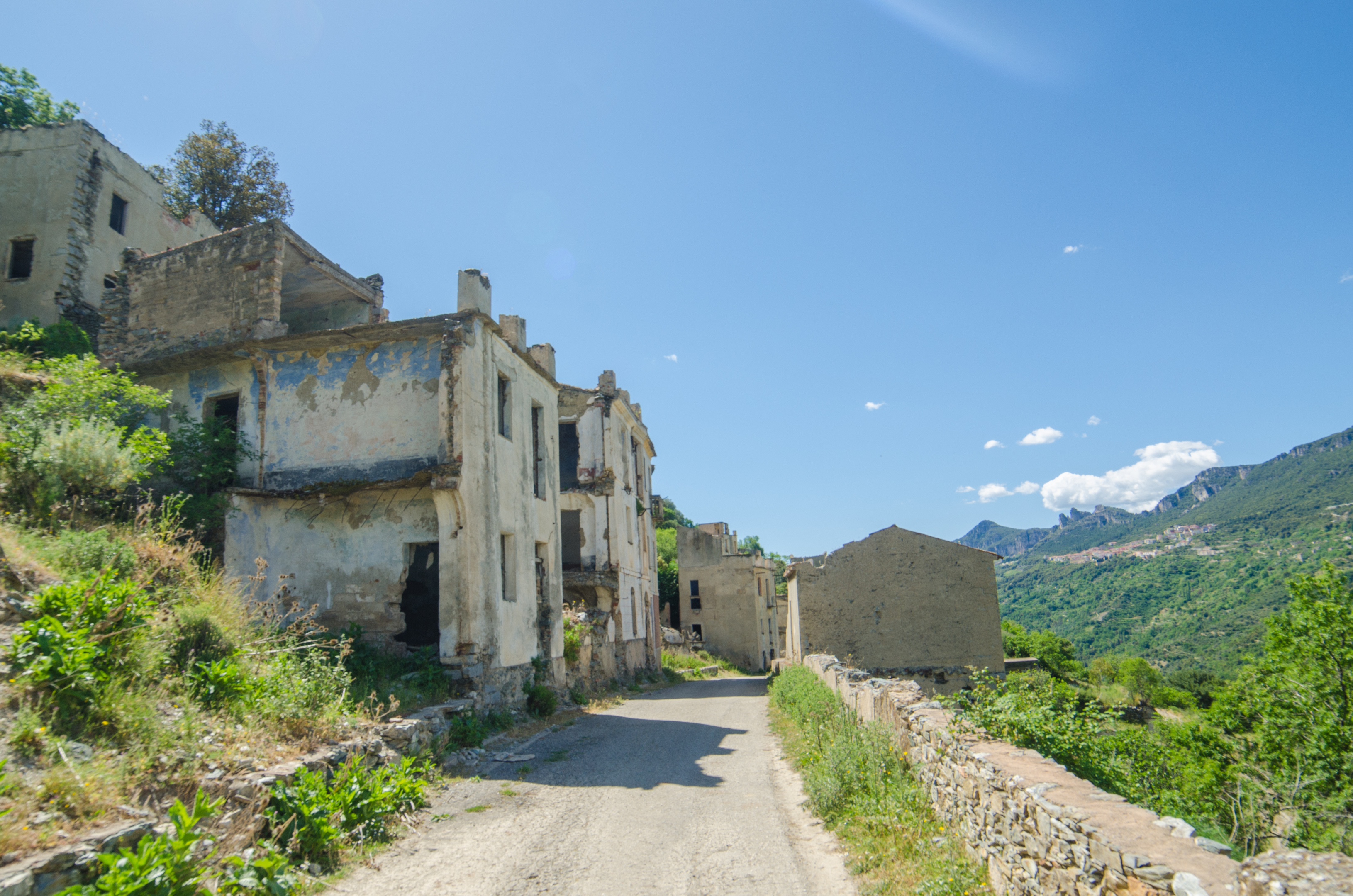
IT is 65 years since Gairo Vecchio was retired and became the Town Time Forgot.
Constructed on unstable ground, the town in the Sardinian hills wasn’t completed long before things started to go badly wrong.
Some houses fell apart, others began to sink or lean, and bad floods didn’t do much to help the situation.
The locals’ solution was to simply abandon the whole place, and rebuild their town a mile farther up the hills.
Today, Gairo Sant’Elena is still standing, thankfully, and the townspeople love their home — and some still fondly recall the other Gairo, Vecchio, now turning to rubble.
As lime was used to make part of the ghost town, it has a distinctive look.
Gairo comes from the Greek for flowing ground, and it seems that the ground below it just flowed a bit too much. The “new” town, of course, is better-protected against landslides.
The insides of houses at Gairo Vecchio are mainly in very-light blues and pinks, faded more by the elements after their windows fell out and roofs caved in.
It’s certainly a spooky experience, and tourists love it as a stark alternative to the picture-perfect appearance of Sardinia’s major towns.
Another Italian ghost town that draws them in by the thousand is Craco, in the province of Matera, close to the heel of Italy’s boot on the map.
Greek tombs from the eighth century have been found here, and ironically, it was making improvements to the infrastructure that did for Craco.
New sewer and water systems damaged the foundations, and gradually resulted in landslides, just like in Gairo Vecchio.
Napoleon controlled the place at one point, as did brigands at another, and many Craco citizens left the country altogether and moved to America, where they still have a Craco Society for descendants of the original townspeople.
Like Gairo Vecchio, it may be crumbling to rack and ruin, and inhabitable, but it is also extremely photogenic, so take your camera along!
Speaking of the United States, if ghost towns are your kind of thing then you’ll utterly love Bodie in California.
With abandoned mines, barns, a saloon bar, pick-up trucks rusting away while the grass literally grows right through them, it is very spooky indeed.
Here, though, you half-expect a ghostly cowboy to jump out, rather than an irate Italian villager.
A Methodist church, still in decent nick, and a gasoline station add to the whole spectacle, and it attracts 200,000 visitors a year, more than many intact towns.
You have to take a cruise to get close enough for photos of Fengdu Ghost City, in China’s Chongqing municipality.
After they built the huge Three Gorges Dam 14 years ago, the changed water levels made it impossible to live here. Because it became a ghost town so recently, though, the whole place is in incredibly good nick.
Which somehow makes it even spookier.
Add to that the many strange statues, mostly religion-based, and it gets creepier still — the statues showing the various ways bad people will be tortured in the afterlife are not for the light-hearted!
Thankfully, the only torture these ghost towns get is lots of tourists turning up to gawp and take photos — but the afterlife of these forgotten places makes our world all the more fascinating.

Enjoy the convenience of having The Sunday Post delivered as a digital ePaper straight to your smartphone, tablet or computer.
Subscribe for only £5.49 a month and enjoy all the benefits of the printed paper as a digital replica.
Subscribe